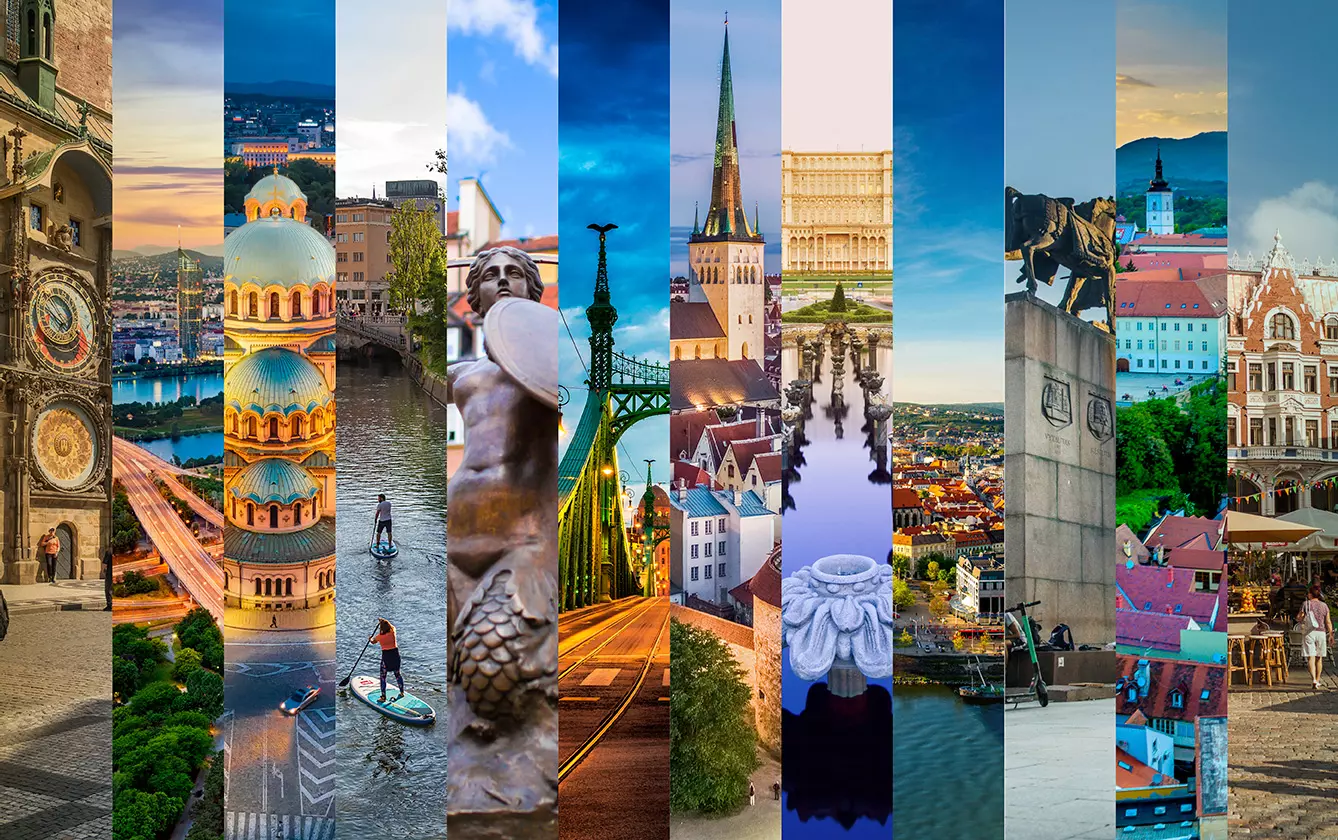Conventional capitals are usually cities of vital importance to their countries, and they change over the course of the history of states. These days, apart from business, tourism constitutes an important part of the income of local communities and is a major contributor to every country’s GDP. The stories behind the Three Seas Region capital cities are often fascinating and complex. But not everyone has the time to read through pages of historical accounts.
That’s why we have prepared a guide to the Three Seas Capitals for you, picking the most exciting tourist attractions each one offers. Hopefully, they will be enough to spark your interest in the region’s rich history and inspire your next short city escape. Which one sounds the most unusual to you?
The Capital of Austria – Vienna
The city of Vienna became the capital of the Austrian Empire in 1805, and it has remained the country’s most important city ever since. Famous for grand battles that took place at its threshold, such as the Siege of Vienna in 1529 and the Battle of Vienna in 1683, the city has a lot to offer those who like to admire classical architecture and are all for historical sites and museums.

But what are its loved tourist attractions? How about the iconic Ferris wheel – a funfair ride built in 1897? The wheel offers stunning views of the city and became a set for a number of films, including James Bond’s The Living Daylights. Have you ever seen a horse dance? Head towards the Spanish Riding School and witness the most breathtaking spectacle, where classical music creates a bond that can unite different species. Horses and their riders will amaze you with their performance at the most enchanting locations.
Afterward, head for a cup of coffee and a sweet treat in one of the world-famous Vienna coffee shops, Demel being the crown jewel. Founded in 1786, the city’s oldest bakery and coffee house remembers such customers as Emperor Franz Joseph and his wife, Sisi. It would also be impossible to go to Vienna and ignore one of its most famous past celebs – Wolfgang Amadeus Mozart. Head to 5 Domgasse Street and enter one of his many homes, but probably the only one lucky enough to witness the happiest years of Mozart’s life.
The Capital of Bulgaria – Sofia
Sofia became the capital city of Bulgaria in 1879. The city still bears visible signs of the Soviet era. It is, however, a very underrated destination that offers varied tourist attractions. There you can go to the Presidential Palace and witness the changing of the guard – a similar experience to the one provided by Buckingham palace. The guards change every hour, so there are plenty of opportunities to take part in this event.
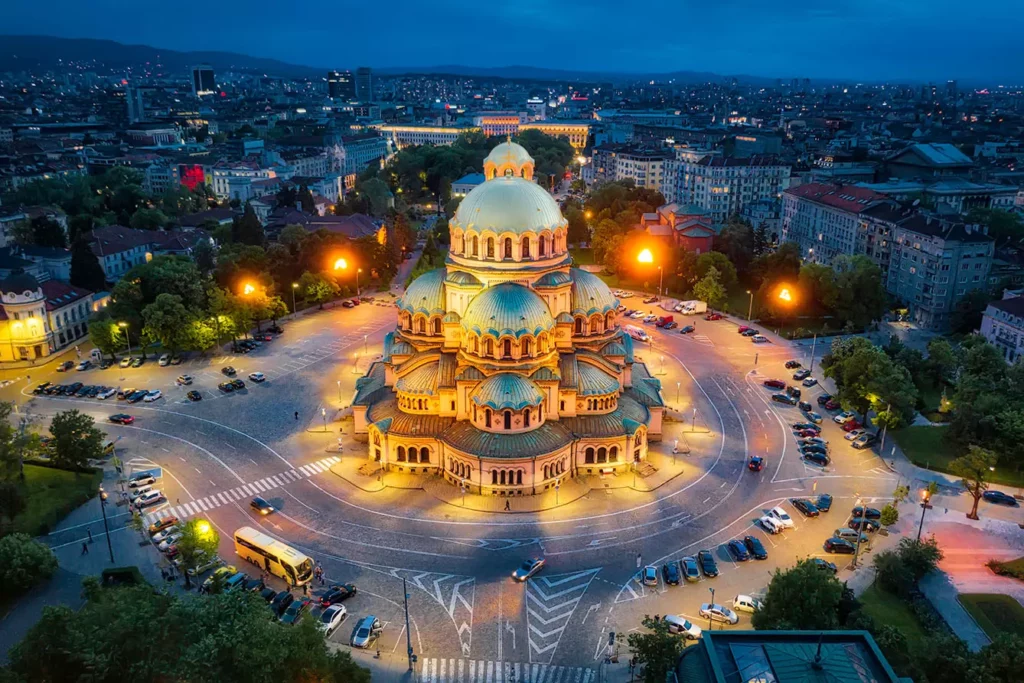
Afterward, you may want to visit the UNESCO World Heritage site – the Boyana Church. The first stage of the construction of this Bulgarian Orthodox temple was completed in the early 11th century, and the oldest preserved frescos come from that period. It is also the only preserved example of the 13th-century Turnovo School of Painting. Due to its age, the site has strict rules about visiting, as the interior must be kept in stable climate conditions.
Sofia’s markets provide another attraction that can be wholly recommended. Devote one day to stroll around the stalls. A market is a perfect place to learn about the locals. And last but not least – klek shops, or “knee shops” (klek in Bulgarian means knee). These basement shops were the first privately owned establishments opened after the fall of communism by emerging local entrepreneurs. They are unique to Bulgaria’s capital and definitely a sight to remember.
The Capital of Croatia – Zagreb
The turbulent history of Croatia makes it tricky to give one answer to the question of when Zagreb became Croatia’s capital. It was first described to fulfill this role in 1557, and it is safe to say that for Croats, it has never lost this status – not willingly, anyway. To cut the long and complicated story short – Zagreb was officially confirmed as the capital in 1991 after Croatia regained its independence. Divided into Gornij Grad (the historical part of the city) and Dolnij Grad (the modern part of Zagreb), it is a city that is easy to sightsee and navigate on foot.

When traveling to Zagreb, you might want to reserve some time for its unusual museums, which testify to the nation’s sense of humor. Learn about relationships that have gone terribly wrong at the Broken Relationships Museum, and prepare your brain for a solid dose of “this is impossible” at the Museum of Illusions.
If you are in the mood for some historical background, you might want to opt for a tour of the Croatian War of Independence that tells you about one of the biggest tragedies experienced by the Croats. However, one that ultimately led to the formation of a wholly independent state.
Or perhaps you fancy a treasure hunt, Copernicus style? Try to locate all nine planets of the Solar System, which are located in Zagreb’s streets. It all started in 1971 when a local artist, Ivan Kozaric, created a sculpture of the Sun. In 2004 another artist, Davor Preis, added the planets, and now you can seek the globes, which were placed not randomly but on a scale (1:680 000 000). A perfect task when on your way to one of the capital’s amazing coffee shops and parks.
The Capital of Czechia – Prague
Prague is the historical capital of Bohemia, the place of residence of several Holy Roman Emperors, and the official capital of Czechia. Being one of the wealthiest cities in 14th-century Europe, its glory did not fade, and it is among the most eagerly visited cities on the Old Continent. According to the legend, it was founded by a Bohemian princess, Libuše, who could easily serve as an iconic female role model. With so much history to house and as one of Europe’s most prominent cultural centers, it is difficult to recommend one valuable attraction above the other without the risk of sounding cliché.
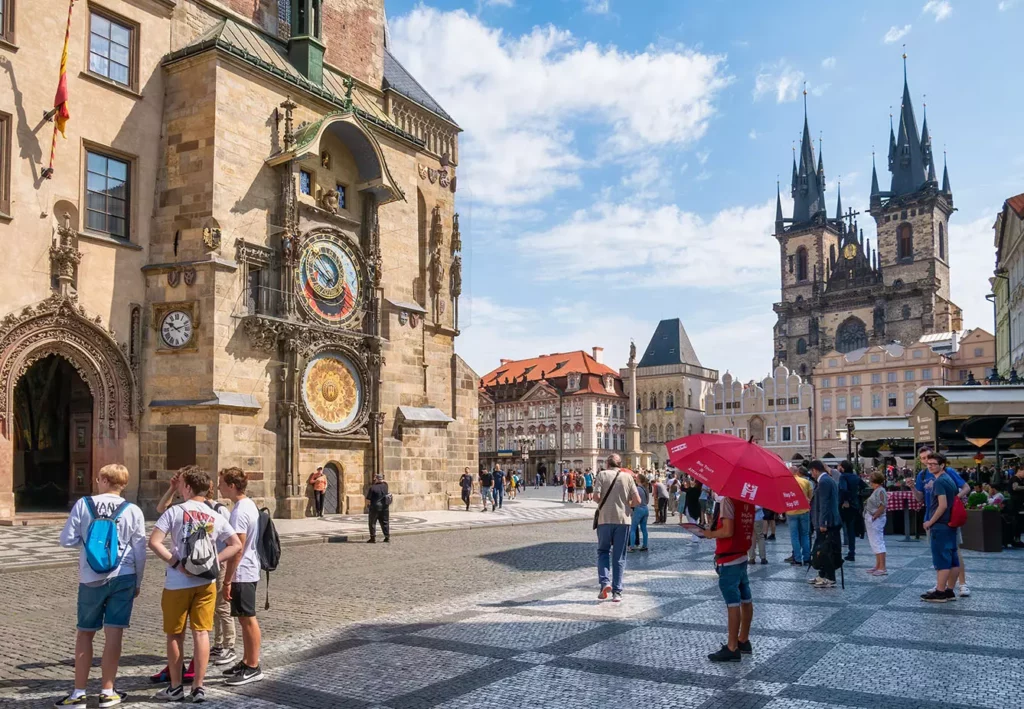
However, it is impossible to recommend Prague without mentioning that its historical center proudly holds the UNESCO World Heritage Site title. Hidden on the southern side of the Old Town Hall is a precious astronomical clock, the world’s oldest working clock of its kind. You would not want to miss seeing how it strikes an hour! Equally, you really want to stroll down the 14th-century Charles Bridge that joins the banks of the Vltava river. As it is reserved for pedestrians only, you can be sure to take some breathtaking pictures of the city.
And lastly, if you do like to feel a bit of heebie-jeebies, then why not immerse yourself in the mysterious and darker history of the city? Prague is known for its alchemist underground, and the Museum of Alchemists and Magicians of Old Prague is certainly a great place to learn about the mystical heritage of the city.
The Capital of Estonia – Tallinn
Known in the past as Kaluri, Lyndanise, and Reval, Tallinn regained its name and received the status of Estonia’s capital in 1918. The name stands for “a Danish city” and is connected to the Danish King, Valdemar II of Denmark, who conquered the city in 1219. Tallinn’s medieval history makes the Old Town a sight worth visiting. The area’s unique character was recognized by UNESCO and entered on the list of World Heritage Sites. The city walls are impressive and testify to the persistence of Tallin citizens, who carefully reconstructed them after the Second World War.

Located in the historical center, Tallinn’s Old Town Hall is the only preserved gothic town hall in northern Europe and is also a symbol of the city – a must-see. The TV Tower, the highest building in Estonia, is among the widely recommended attractions. Opened to the public, it offers unforgettable views. In the old town, you can also find the oldest pharmacy in Europe (established in 1422) that, simultaneously, is claimed to be a possible birthplace of marzipan.
Following the trail of this popular national sweet, you will find yourself in the historical Rotermann Quarter, where Kalev Chocolate Shop and Workshop is located. The shop offers traditionally manufactured sweets and a 2-hour workshop where you create your own sugary goodies. An interesting experience, worthy of recommendation.
The Capital of Hungary – Budapest
Budapest’s history is, in fact, a history of three historical cities (Buda, Pest, and Óbud) which in 1873 became one. In the 13th century, the three former cities were one of Europe’s largest and most affluent towns. Sometimes called “Paris of the East,” Budapest is one of those cities you want to return to. What to pack for your trip? A towel. Why? Hungary is the Spa Capital of Europe, and Budapest alone has 123 thermal springs, known to have been easing troubled minds and providing relief to tired bodies for millennia. Additionally, the baths’ architecture is a feast for your eyes.
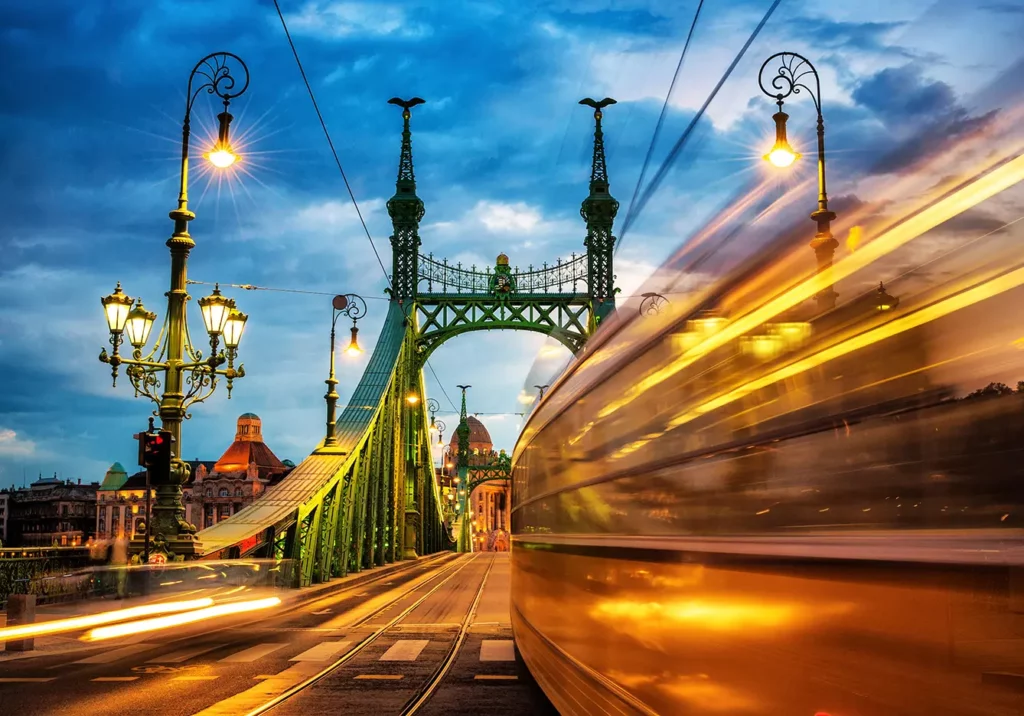
Try a spa with a twist – visit the beer spas or one of the night spa parties. Unforgettable experience. The city’s architecture is stunning, and Budapest can proudly call itself home to several UNESCO World Heritage Sites, such as Buda Castle and Castle Hill.
Budapest might also be the New York of Europe in the context of shopping. Its traditional markets, such as the Central Market Hall, and luxury boutique shops, have the power to send many bank accounts into the red. Similarly to Austria, Budapest has a longstanding tradition of coffee houses that take your regular latte to a whole new, royal dimension. Many museums and cultural offer form the cherry on the top and should seal the deal for any traveler curious to discover the pearls of European heritage.
The Capital of Latvia – Riga
Founded in 1201, in its early days, Riga became a Hansa member in 1282 and one of the key trade cities on the Baltic coast. It officially became the capital of Latvia in 1918. In the 19th and 20th centuries, Riga saw rapid development and construction of art nouveau-style buildings. In fact, Latvia’s capital has the highest concentration of this style of architecture in the whole of Europe. A UNESCO World Heritage Site, the old center of Riga (Vecrīga) is recognized for its unique character and irreplaceable historical value. When strolling around the Old Town, you simply must see the House of the Blackheads – a powerful brotherhood active in the 14th century.

The Germans completely destroyed the original building during the Second World War, but the reconstruction we can admire today does justice to the original. For a bite of a grimmer history, the brave ones may want to visit the Corner House – former KGB quarters. It holds an exhibition that is part of the Museum of Occupation of Latvia and a great way to understand the nation’s difficult history in its most recent past.
Another iconic site can be seen in the Meistaru Street Cat Building. There, at the top of the roof of the medieval-inspired construction, you can see black cats. The sweet, arched-back felines were originally meant to express the owner’s feelings about the Great Guild, but a court order turned them around and made their rear ends point in the opposite direction. So much for freedom of speech and expression in the early 20th century!
The Capital of Lithuania – Vilnius
Vilnius is the historical capital of the Grand Duchy of Lithuania. Interestingly, the first mention of Vilnius can be found in letters written by Gediminas, the Grand Duke, to the Germans in 1323, inviting them to settle in his country’s capital. As is the case with the other two Baltic States, the Old Town in Vilnius has the UNESCO World Heritage Site title. And it is truly a remarkable place – one of the oldest surviving medieval centers in Europe, with its picturesque architecture, cobblestone streets, and very old churches.
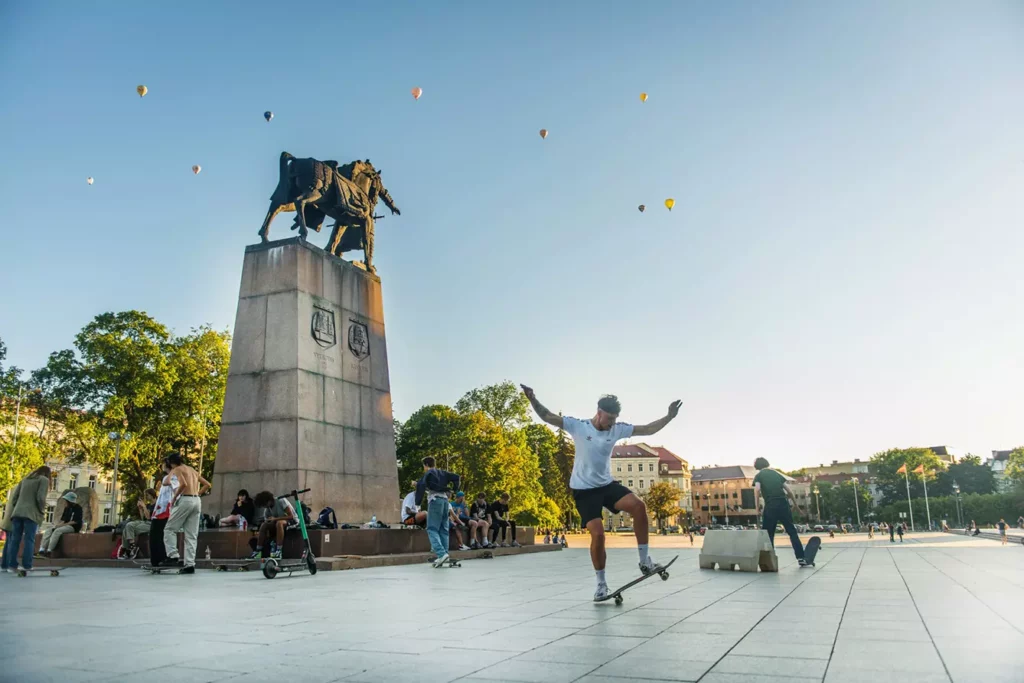
When in Vilnius, why not get a taste of the Lithuanian nationally loved pastime activity – hot air balloon rides? Vilnius is probably the only capital in Europe where you are allowed to take off in a hot-air balloon. The views of the greenest capital city in Europe are breathtaking. You can also cross another border and enter the Republic of Užupis – an arty district of Vilnius that announced its independence in 1997. Even though the ‘Republic’ has its own national anthem, passports, and an embassy in Munich, it is not recognized by the international community.
Leaving aside the reasons, it is still one of the most charming places to stroll around in Vilnius and enjoy a meal or a cup of coffee (or both!) And all that in addition to interesting museums, historical monuments of architecture, and hospitality of the locals.
The Capital of Poland – Warsaw
Warsaw obtained city rights in 1300. Interestingly, its route to becoming Poland’s capital was long and involved several announcements awarding the city this status. The first such attempt can be seen in the decree by Sigismund III Vasa, who in 1596 made it the city of the Royal Residence. Then, in 1807, it was made the capital of the Duchy of Warsaw, to later (1815) be declared the capital of the Kingdom of Poland. Finally, on the 11th of November 1918, Warsaw was finally and beyond any doubt granted the status of Poland’s capital upon the country regaining its independence.
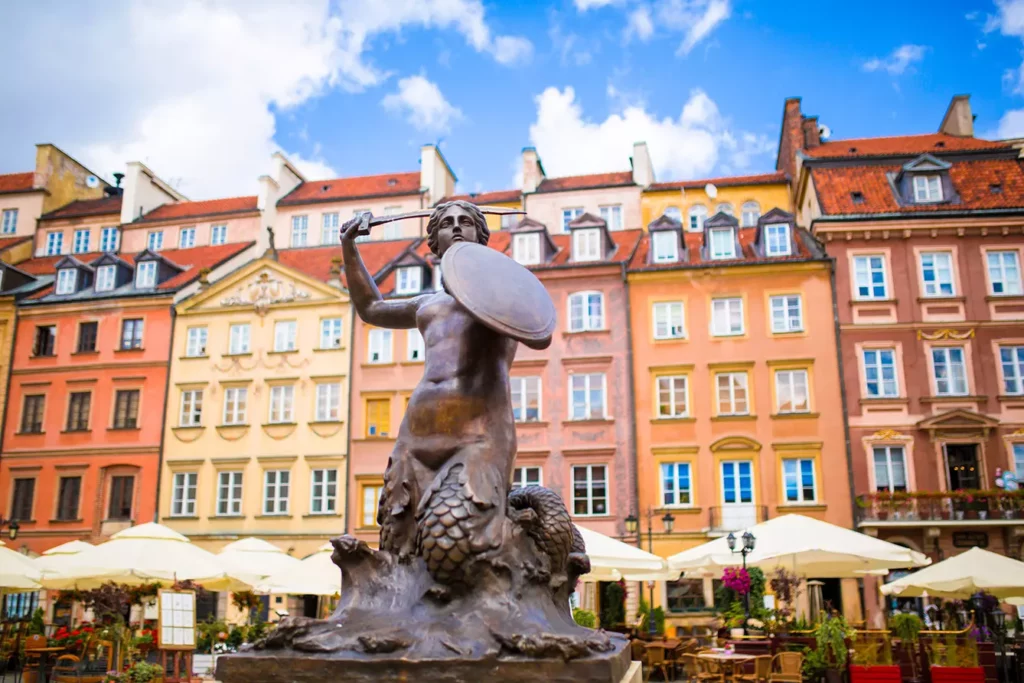
Left in rubble by the German forces in 1944, it had to be almost entirely reconstructed. The Old Town was built according to old photographs and graphics and is on the UNESCO World Heritage Sites list. The city reflects the state’s troubled history, and it can be called a ‘treasure hunt city’ –where the more effort you put into exploring its mysteries, the more treasures you will discover. You cannot miss a walk in the Łazienki Park with the famous Palace on the Island. To better understand and appreciate the effort of what it cost Poles to make Warsaw what it is today, you should visit the Museum of Warsaw Uprising.
And since we are discussing Warsaw’s unique museum experiences, try Fotoplastikon. It is the only stereoscopic theatre in Poland and one of very few in the world. During the presentation, you will be shown some of Fotoplastikon’s archives, which include over 3000 original photos of Warsaw and other places around the globe. You may want to walk on the Vistula promenade and take a compulsory picture with the Warsaw Mermaid – the city’s symbol. Not to be confused with the Palace of Culture and Science, but that’s a whole other (long) story.
The Capital of Romania – Bucharest
Bucharest became the capital city of Romania in 1862. During the interwar period, it was also nicknamed the “little Paris.” Its construction on seven hills draws from the old Roman tradition. As with other regions of this part of Europe, the history of Romania is rather complicated and overshadowed by the communist regime. The town was hit hard by the latter ideology when the President (or dictator, as the historians also call him), Nicolae Ceaușescu, ordered many historical buildings to be wiped out and make way for new and great socialist architecture.
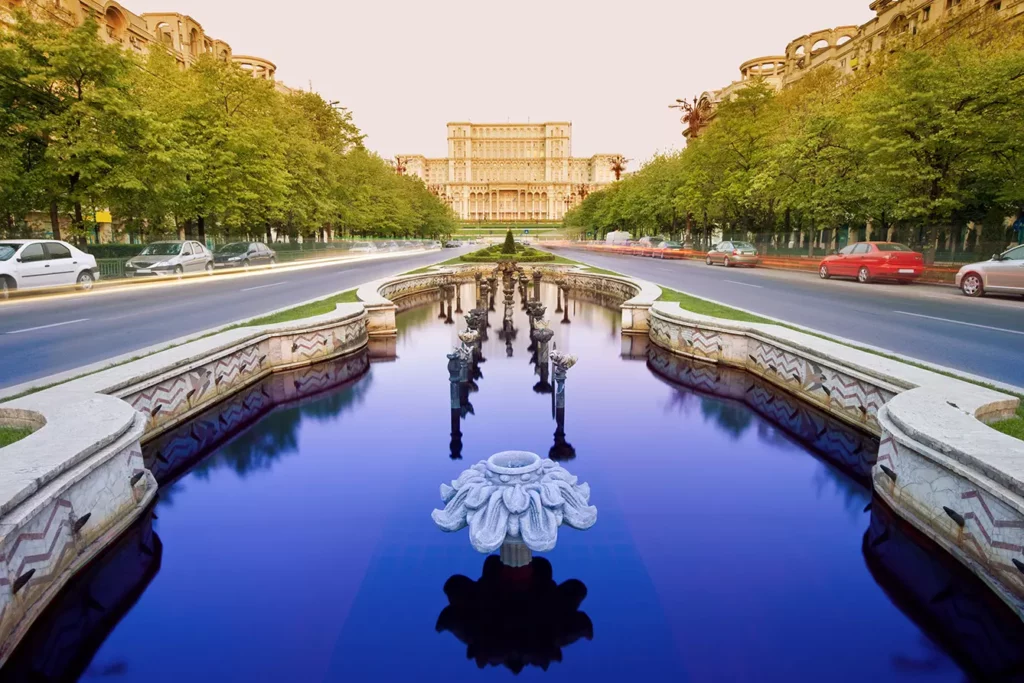
The Parliament building, constructed during his rule, is the world’s largest and… heaviest administrative building. Bult with Romanian marble is probably the most expensive waste of money since a part of it remains empty – it seems no more administrative bodies are left to fill the vacancies. If you like architecture, the obvious choice for sightseeing is the Old Town. It managed to survive the Ceaușescu, and its 15th and 16th-century buildings give you the feel of pre-communist Romania.
If you are after something more quirky, Bucharest offers you a one-of-a-kind Kitsch Museum. Let’s face it – kitsch is in all of us (as the museum’s website claims), and everyone should face it. With great reviews from those who visited, it seems to be a nice break from more conventional touring.
Besides ancient orthodox and other religious temples, Bucharest has its own Triumphal Arch. The structure dates back to 1935 and was built to commemorate the end of the First World War. It is visible virtually everywhere in the city and offers a fantastic panoramic view. Romania’s capital is also known for its café culture and great food. One restaurant is particularly recommended for its excellent dishes and art-nouveau interior. It is called Caru’ cu Bere, and due to its popularity among tourists and locals alike, it is best to book ahead if you wish to dine there.
When it comes to getting some rest, perhaps you would be tempted to stay at the Manuc’s Inn – a popular tourist attraction connected to Prince Vlad Dracula III. Probably not the Dracula, so you can sleep safe and sound. Probably.
The Capital of Slovakia – Bratislava
An interesting fact about Bratislava is that it is the only capital city in the world that borders two countries (Hungary and Austria). Part of the Amber Road, the city was also known under the German name Pressburg and Hungarian name – Pozsony. It was made the capital of the Hungarian Kingdom in 1536. After the First World War, it was granted the status of the capital city of Slovakia, part of Czechoslovakia and remained so during the coming, turbulent times of the Second World War and post-war reality until the fall of communism and, eventually, the formation of an independent country in 1993.
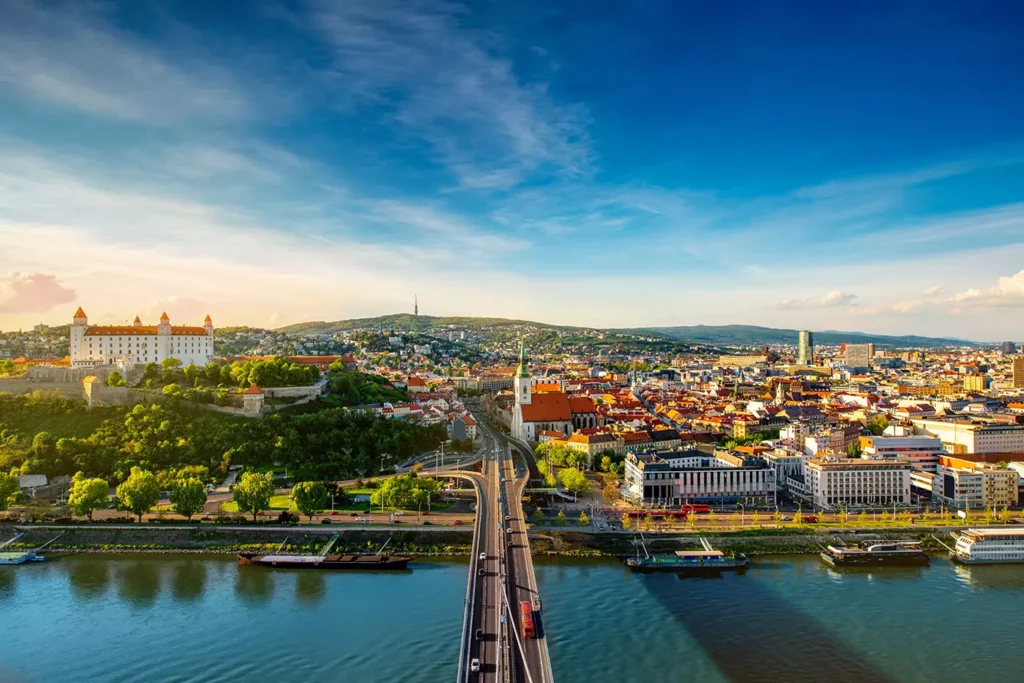
Among the first things to recommend when visiting is the Old Town. With magnificent buildings, fountains, and temples, the historical center is sure to claim you for more than a day. Scattered throughout streets full of character are various brass statues and figures, of which Čumil, the Man at Work statue, became the icon for the city. The Bratislava Castle is the focal point of the entire capital, built as if around it.
Anyone who comes to Bratislava simply has to visit this impressive stronghold. It is also worth heading for the suburbs, where you can see the 5th century BC Devin Castle – one of Slovakia’s three oldest castles. Overlooking the Danube river, you can forget about the world around you and, for a second, feel like one of these ancient princes and princesses, looking out of their chambers and daydreaming.
Speaking of time, among many museums and galleries that can be found in Bratislava, one serves as a reminder of the ticking time. Literally. A non-imposing, small building is home to the Museum of Clocks and a grand place to visit. The inventiveness of clock masters will leave you marveling over their skills more than once during your visit. For a taste of more modern Bratislava, head to the former industrial estate – a completely revitalized area with a glass building of Eurovea Gallery, one of the city’s largest shopping malls. It is located on the waterfront and offers many popular attractions, such as a cinema, a casino, and a swimming pool.
The Capital of Slovenia – Ljubljana
The first mention of the city, under the name of Leibach, is dated back to between 1112 and 1125, when a document known as Nomina Defunctorum speaks of cannon placed by the Ljubljana castle. Numerous earthquakes redefined the city’s architecture you can see today. Known as an important center of art since the 16th century, Ljubljana has attracted many renowned architects. It was first named the capital city of Slovenia after the Second World War but remained a part of former Yugoslavia. Slovenia became an independent state in 1991.
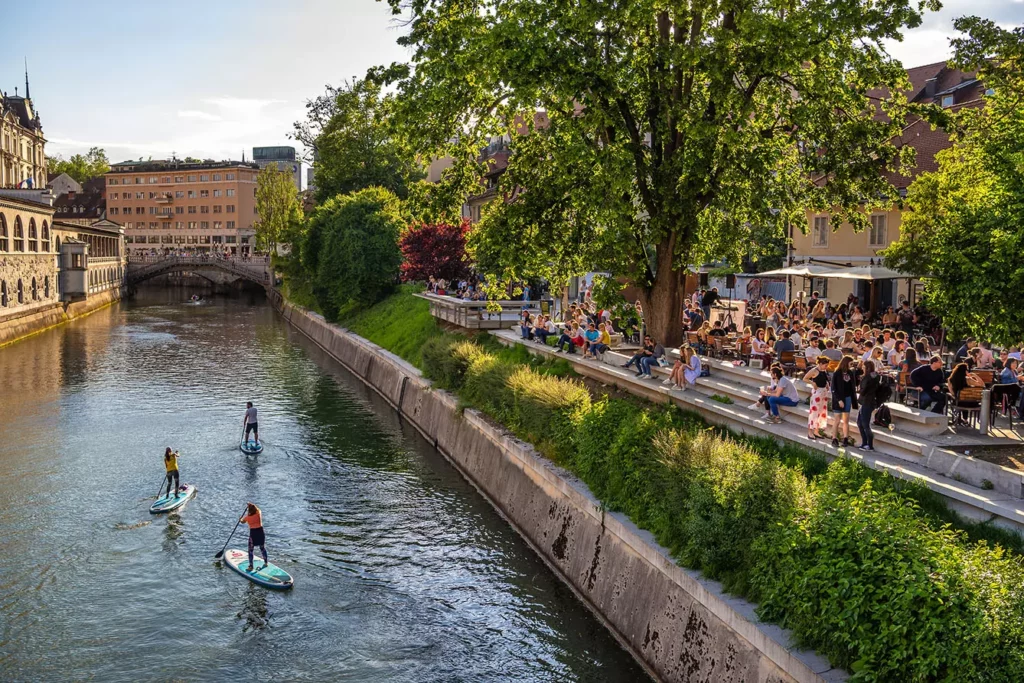
A dragon, the symbol of strength, greatness, and courage, has been the city’s symbol since the 15th century. One of the most magnificent representations of this mythical reptile-like creature can be seen on the Dragon Bridge. The bridge itself was the first concrete bridge in the city, constructed in 1901. The four dragon statues are impressive and a great local celebrity to have a photo with. Another site that dates back to the medieval greatness of the settlement is the Ljubljana Castle. Standing proudly atop a hill, it guards the area and provides a stunning panoramic view of the city.
The Old Town, which lies at its feet, hides several architectural monuments, such as the 15th-century Town Hall and the Baroque St Nicolas Cathedral. Leaving the Old Town in the direction of Preseren Square, you will find the famous Triple Bridge connecting the banks of the Ljubljanica river. Before you decide it is an unnecessary extravagance, you must know that the main bridge was meant only for road traffic. Two pedestrian bridges were added later for the convenience of the public. The city is also an important gathering of the finest art-nouveau architecture.
A Slovenian architect, native to Ljubljana, is responsible for most of the town’s reconstruction after the 1895 earthquake. His name was Jože Plečnik, and he is considered one of the greatest contemporary architects, with a major influence on the 20th-century architecture of Vienna, Prague, and Ljubljana. The Triple Bridge mentioned above is one of the examples of his design. Plečnik’s impact on Slovenia’s capital is likened to Gaudi’s effects on Barcelona. Today, you can visit his house (Plecnik House) and familiarize yourself with his work and life story.
After a long day of sightseeing, everyone deserves a good meal. Why not head for the famous Ljubljana skyscraper – Nebotičnik? Constructed in 1933, it was the tallest building in the Balkans, and its 13 floors granted it a spot among the top ten tallest buildings in the world. You will find a recommended restaurant on the 12th floor; after your meal, head to the top, where on the 13th floor, you can find a drink bar. And a great view of the city.
Destinations for city breaks sorted!
And there you have it – 12 amazing destinations for short (or longer) holidays in a nutshell. As with all nuts, the tough shell needs to be cracked open to reveal the hidden goodness. We hope that our rough descriptions of the twelve truly unique and often underrated cities of the Three Seas Region inspired you to reach for that nutcracker and see for yourself what is hidden underneath. There is a big chance that you will find pearls instead of nuts.
You may be also interested in our article about Central European Flags.


